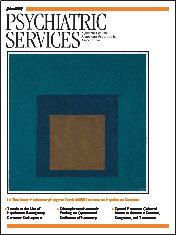The Pecking Order: Which Siblings Succeed and Why
Anyone who practices family or individual psychotherapy will find The Pecking Order: Which Siblings Succeed and Why interesting reading. Dalton Conley, New York University (NYU) professor of sociology and public policy, sets out to debunk the simplifications to which we unthinkingly subscribe. Differential success among siblings is not, he argues, a simple matter of genetics, gender, or birth order, or of parental intentions or innate talent. Rather, success is a complicated, multifactorial outcome, shaped by economic and social forces impinging on family histories at distinct points in time, predicated as much on luck and accident as on good genes or strong character. Conley's accounts of differential success among siblings encourage us to look more thoughtfully at our patients and our society.
Conley bases his book on sibling interviews in a five-year NYU study and on statistics from the U.S. Census; the University of Michigan's annual survey, since 1968, of the same 5,000 families; and the University of Chicago's General Social Survey, national demographic data collected since 1972. The latter database incorporates the 1994 sibling-focused Study of American Families. Conley intersperses statistics with sibling stories, a strategy that generally convinces but can lead to an uneven tone when academic argument elides into "dramatic narrative."
Some of Conley's findings that rang true for me, the fifth of seven siblings: "If you attended college, there is almost a 50 percent chance that one of your siblings did not …. When parents have enough 'class' resources to go around—time, money, social connections—kids turn out more similarly since parents … can …compensate for inequities." But for many reasons—divorce, the closing of Northern factories or the opening of Sunbelt research parks, family size, the spacing of children within the family, cultural shifts in attitudes toward women, wild cards such as homosexuality or strong religious beliefs—parents may or may not have enough "class" resources for each child. A general rule: family size—and economic and social forces both within the family and within the broader culture—trump both birth order and genes. According to Conley, parents who have only two children control the environment and impart their values more easily. But "the family itself becomes a mass of competing influences when the numbers increase … community conditions, peer influences, and random chance all seem to play a greater role the more siblings there are."
The Baltimore Sun, recently reporting on new understandings of human variation, cited the work of anthropologist Frank Johnston, who looked at the median height of seven-year-olds born to Central and South American parents (1): "Typically much shorter than North American youngsters, they grew up to match the American median if they were raised in the United States." Johnston explained the findings as reflecting better nutrition, not genetics: "Socioeconomic status has more impact on morphology than race or ethnicity." Similarly, Conley's book suggests that a family's socioeconomic status—a more or less dynamic variable, especially today—affects sibling differences more than birth order or other single-factor explanations. His work urges a more sophisticated, more nuanced understanding of "the pecking order" we typically experience first within the family.
Dr. Bailey is an instructor in psychiatry at the Johns Hopkins University School of Medicine.
1. Roylance FD: New science undermines oldest notions about race. Baltimore Sun, Sunday, Oct 10, 2004, p 1Google Scholar



